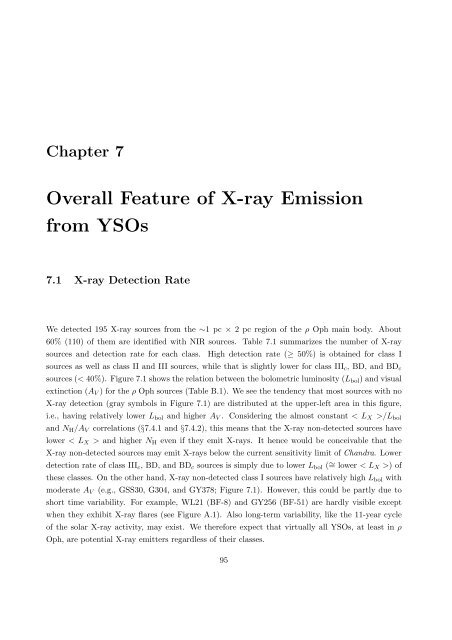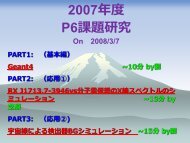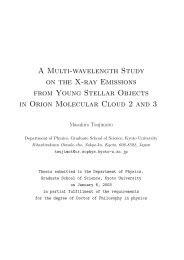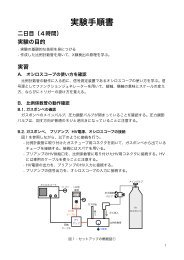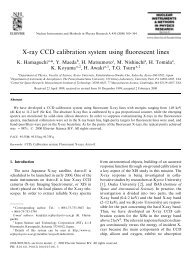X-ray Study of Low-mass Young Stellar Objects in the ρ Ophiuchi ...
X-ray Study of Low-mass Young Stellar Objects in the ρ Ophiuchi ...
X-ray Study of Low-mass Young Stellar Objects in the ρ Ophiuchi ...
You also want an ePaper? Increase the reach of your titles
YUMPU automatically turns print PDFs into web optimized ePapers that Google loves.
Chapter 7Overall Feature <strong>of</strong> X-<strong>ray</strong> Emissionfrom YSOs7.1 X-<strong>ray</strong> Detection RateWe detected 195 X-<strong>ray</strong> sources from <strong>the</strong> ∼1 pc × 2 pc region <strong>of</strong> <strong>the</strong> <strong>ρ</strong> Oph ma<strong>in</strong> body. About60% (110) <strong>of</strong> <strong>the</strong>m are identified with NIR sources. Table 7.1 summarizes <strong>the</strong> number <strong>of</strong> X-<strong>ray</strong>sources and detection rate for each class.High detection rate (≥ 50%) is obta<strong>in</strong>ed for class Isources as well as class II and III sources, while that is slightly lower for class III c , BD, and BD csources (< 40%). Figure 7.1 shows <strong>the</strong> relation between <strong>the</strong> bolometric lum<strong>in</strong>osity (L bol ) and visualext<strong>in</strong>ction (A V ) for <strong>the</strong> <strong>ρ</strong> Oph sources (Table B.1). We see <strong>the</strong> tendency that most sources with noX-<strong>ray</strong> detection (g<strong>ray</strong> symbols <strong>in</strong> Figure 7.1) are distributed at <strong>the</strong> upper-left area <strong>in</strong> this figure,i.e., hav<strong>in</strong>g relatively lower L bol and higher A V . Consider<strong>in</strong>g <strong>the</strong> almost constant < L X >/L boland N H /A V correlations (§7.4.1 and §7.4.2), this means that <strong>the</strong> X-<strong>ray</strong> non-detected sources havelower < L X > and higher N H even if <strong>the</strong>y emit X-<strong>ray</strong>s. It hence would be conceivable that <strong>the</strong>X-<strong>ray</strong> non-detected sources may emit X-<strong>ray</strong>s below <strong>the</strong> current sensitivity limit <strong>of</strong> Chandra. <strong>Low</strong>erdetection rate <strong>of</strong> class III c , BD, and BD c sources is simply due to lower L bol ( ∼ = lower < L X >) <strong>of</strong><strong>the</strong>se classes. On <strong>the</strong> o<strong>the</strong>r hand, X-<strong>ray</strong> non-detected class I sources have relatively high L bol withmoderate A V (e.g., GSS30, G304, and GY378; Figure 7.1). However, this could be partly due toshort time variability. For example, WL21 (BF-8) and GY256 (BF-51) are hardly visible exceptwhen <strong>the</strong>y exhibit X-<strong>ray</strong> flares (see Figure A.1). Also long-term variability, like <strong>the</strong> 11-year cycle<strong>of</strong> <strong>the</strong> solar X-<strong>ray</strong> activity, may exist. We <strong>the</strong>refore expect that virtually all YSOs, at least <strong>in</strong> <strong>ρ</strong>Oph, are potential X-<strong>ray</strong> emitters regardless <strong>of</strong> <strong>the</strong>ir classes.95


